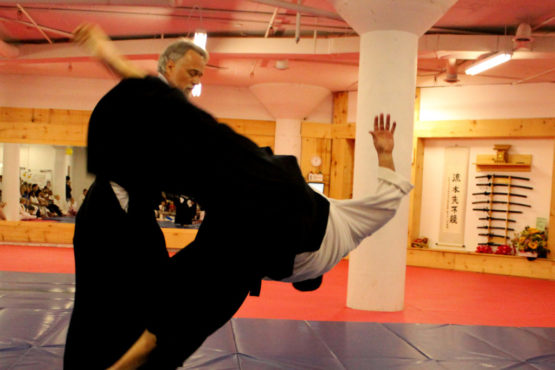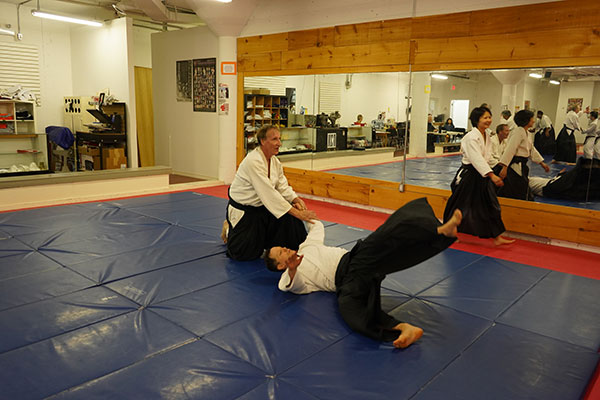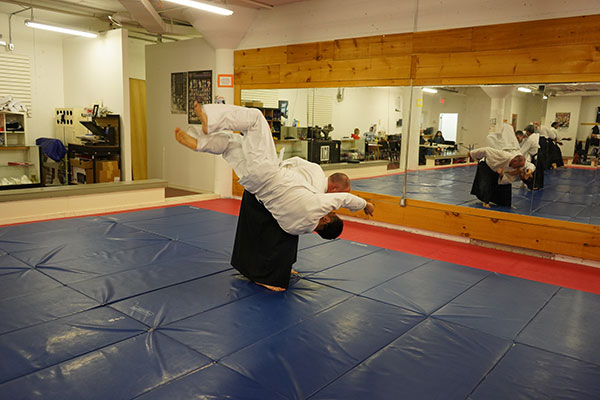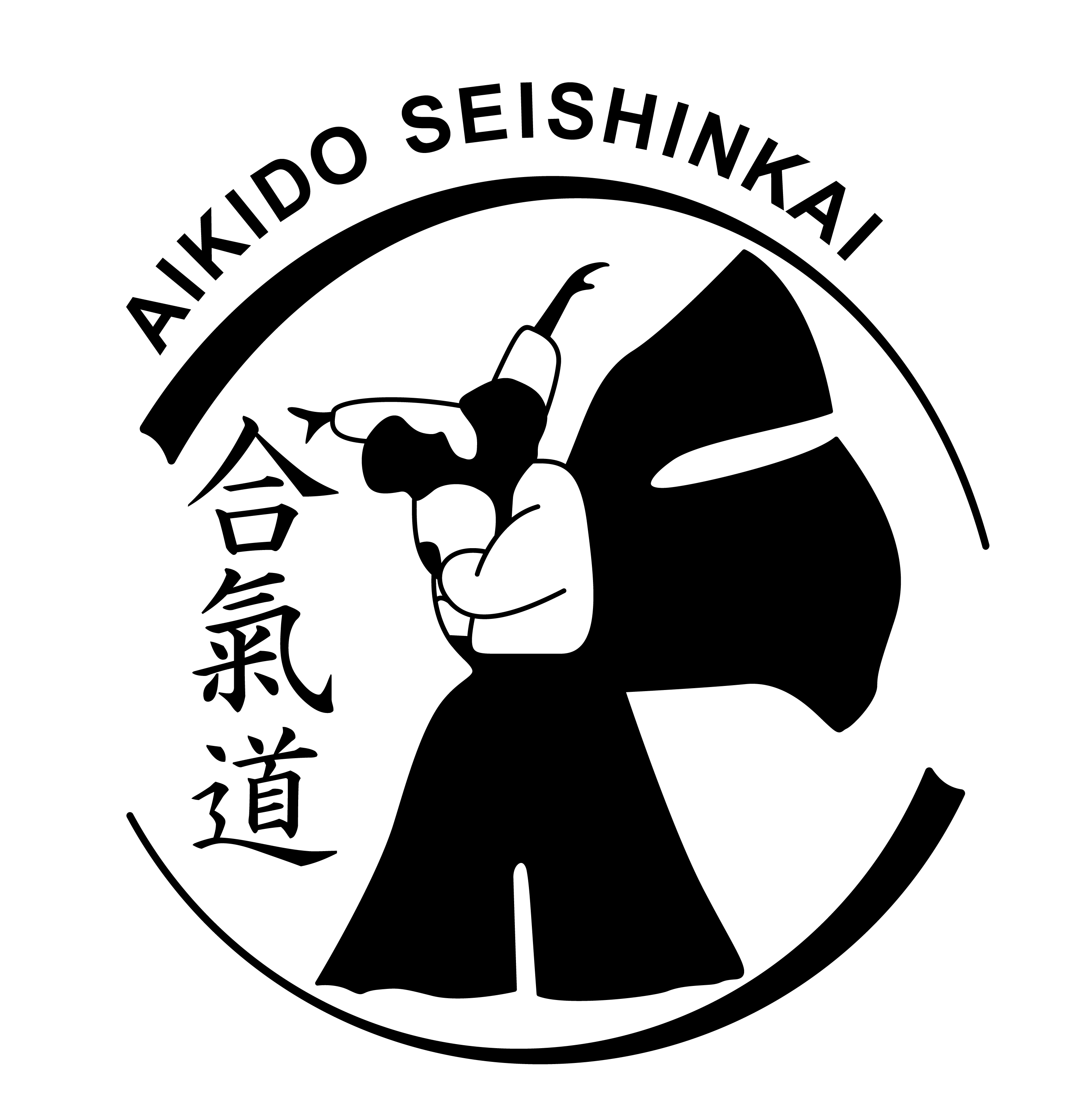There seems to be quite a few references to the “pillars of Aikido”. The two most popular
references are:
- The six pillars of Aikido Established by O’Sensei, Morihei Ueshiba
The six pillars of Aikido techniques are:- Shiho-nage (four direction throw) – This technique represents the gratitude Aikido students feel toward life in all “four directions”.
- Irimi-nage (entering throw). Irimi means “to enter”, physically and spiritually, into an attack while simultaneously sidestepping it.
- Kaiten (open-and-turn movements) – Also described as Kaika (turn and transform), an instantaneous adjustment to any attack.
- Kokyu-ho (breath-power techniques) – “Breath is the thread that ties creation together. when the…. variations of breath….can be sensed, individual techniques of Aikido are born”.
- Osae-waza (pinning techniques) – “Pins represent perfect control, the proper resolution of a technique.”
- Ushiro-waza (rear techniques). – “Through the practice of rear techniques, one learns how to train one’s mind and body against attacks from all directions. Rear techniques open the window of one’s mind and foster one’s sixth sense”.
- John Stevens, author of several Aikido books defines a further three (including the six above, Stevens calls his the “Nine Pillars Of Aikido”
- Tenchi heaven and earth – to stand firmly between.
- Aiki-ken & aiki-jo the sword of resolution and staff of intuition
- Ukemi 7 times down, 8 times up
Basic Ukemi
Mae Kaiten – Basic Front Roll
Ushiro Kaiten – Basic Back Roll
Mae Yoko Kaiten –Forward Side Roll
Ushiro Yoko Kaiten – Backward Side Roll
Ushiro Mae Yoko Kaiten –Front Side Roll When Falling Backward
Ushiro Mae Kaiten – Front Roll When Falling Backkward
Ushiro Otoshi -Back Fall
Ukemi is an active process.
Uke really has two roles. As the attacker, uke needs to give a good attack in order for nage to benefit from the practice. Once nage blends with your attack and starts to redirect it, your experience changes from leading (attack) to following (falling). Nage has taken the lead and is directing your energy with his/her ki.
The mistake many make at this point is to become passive. As uke, you want to always be active. Instead of being pulled or pushed around and thrown to the ground, you will gain a tremendous advantage if you actively follow nage’s lead, moving under your own active power (ki) and direction. Once nage takes your balance beyond recovery, notice that your balance is going and disengage your interaction with nage and lower yourself to the ground. Uke should always feel like he/she is in control.
Breathing is very important in ukemi. If you hold your breath, your body won’t be soft and limber and you’ll soon feel worn out. If your ukemi seems difficult, use your breath to help take the fall.
If you control your ukemi, breathe, and stay relaxed with the feeling of ki flowing through you,.
How-to:
- Get into proper posture:
When you’re being thrown, you have to automatically assume the right posture. For beginers it does help if they are aware of their posture and at least facing the right direction.
For a forward ukemi you should be in a slightly side-on sideways posture. For example if you want to roll on the right hand side, your right shoulder and foot should be pointing at your landing area. - Set your distance:
A common mistake is to try and roll from an upright position. This is really like trying to perform a jump out of a window head first 6 feet off the ground. Not impossible but very difficult.
Make life easy on your self and lower your body by bending your front knee and leaning forward until your finger tips almost touch the ground. - Extend your arm:
Put out one arm (thumb pointing to the floor) in the direction you wish to roll. Your arm should be slightly bent and strong enough so that it doesn’t collapse as you roll on it. You don’t want to make it tense. There should still be some flexibility.
Remember the arm is part of the “circle” and designed to work like a shock absorber when taking a fall. If it is tense it will break. - Tuck your head in:
As you are about to roll, tuck your head in so that your head does not hit the floor or mat. If your posture is correct, your head is looking behind you slightly. It might seem odd but your body will now be perfectly aligned to roll along your arm and across your shoulders. - Tuck your back leg in:
Tuck your back leg in as soon as you start the roll. Doing this will make the ukemi much smoother and positions the back foot for a smooth exit, allowing you to stand straight up instead of stumbling forward.






